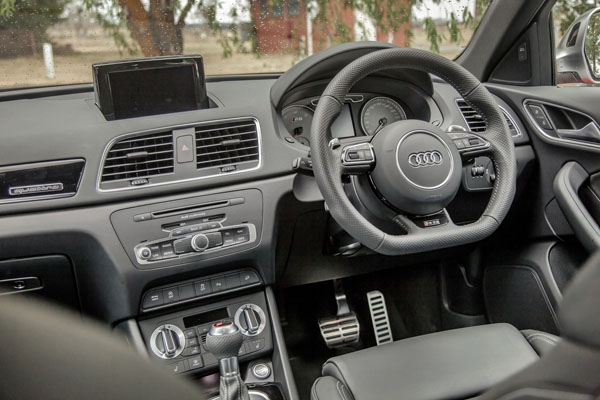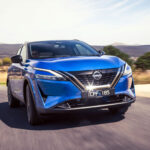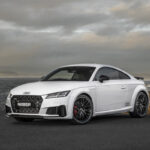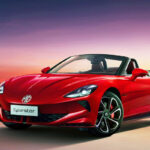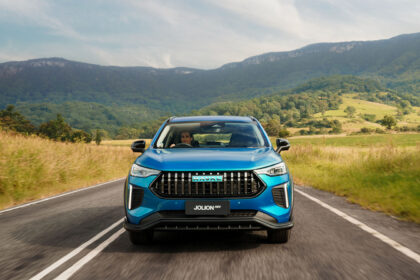
The queue of Q’s at Audi just got longer with the addition of the RS Q3 to the company’s line-up of sports utility vehicles. And this is no ordinary SUV, having performance credentials to match the RS insignia.
In performance, nothing in the compact SUV segment can hold a candle to the RS Q3 with the sprint from zero to 100km/h coming up in 5.2 seconds on the way to an electronically governed top speed of 250 km/h.
The key to this can be found under the bonnet with Audi’s award winning five-cylinder engine – the 2.5 TFSI turbocharged direct-injection engine pumping out peak power of 228 kW between 5200 and 6700rpm and top torque of 420Nm from only 1500 revs. Numbers that put the driver in a position of supreme confidence when overtaking.
With the help of fuel efficiency measures such as stop/start engine technology, a combined urban / highway petrol consumption is put at 8.8 litres per 100 kilometres. Carbon dioxide emissions are 206 grams per kilometre.

This prodigious power is put to ground through a seven-speed dual-clutch automatic transmission, which can be operated by the driver in manual mode via a centre console shift lever or steering wheel-mounted paddles.
The driver’s mood can also be accommodated with drive select performance system, offering three modes, allowing them to change the characteristics of the accelerator pedal and steering. Capping it all, the audible engine note also pleasingly follows the script.
In keeping with its sporting intent, the RS Q3 makes use of electronic stability control with Sport mode and can be completely deactivated. Underpinned by an RS chassis, the body has been lowered by 25 mm, while the vehicle rolls on standard 19-inch wheels with 20-inch wheels an option.
This is no off-roader, so all our testing was done on sealed surfaces. The ride package is effective, with occupant comfort far being very good on all but the most broken road surfaces.
Electro-mechanical steering is precise and offers driver feedback that is not unsettled by such conditions.
At the front, 365 mm brake discs have been engineered to save weight and are operated on by eight-piston black-painted callipers carrying the RS logo. They have no problem reining in the powerful performer. The park brake is electronically activated.
Further distinguishing marks adorn the RS Q3. Most obvious are an RS bumper, Audi’s ‘quattro’ logo in the air intake beneath, aluminium roof rails and long roof spoiler, diffuser in the rear apron and large, elliptical tailpipe. Customers can add their own stamp with two optional styling packages.
Climbing into the cabin, occupants are greeted by sporty cues such as supportive Nappa leather front sports seats carrying the RS Q3 logo, a flat-bottom steering wheel with finger-tip system functions and specially designed RS instruments.
The rear storage area will take 356 litres of luggage, increasing to 1261 litres of cargo loaded to the roof when the 60:40 rear seat backs are folded. The loading sill is fitted with a stainless steel protector.
Bluetooth and sat-nav are standard and the Bose surround-sound system drives 14 speakers with up to 465 Watts of power, enough to get the best out of hip-hop or Handel.
On the safety front, Audi’s own tried-and-tested quattro permanent all-wheel drive system shifts power between the front and back, the majority of torque going to the front wheels under normal driving conditions, shifting quickly towards the rear wheels when conditions become dodgy.
This is backed up by electronic stability control which can be relaxed in Sport mode, or completely turned off if desired. A hill hold facility is standard and hill descent control an option.
Coming to market at $81,900, plus on-road costs, the launch vehicle was optioned with metallic paint and an exclusive high-gloss black package adding a further $2450. Built in Spain, it is the fourth RS model to be launched on the market this year from quattro GmbH, the high-performance subsidiary of Audi.




